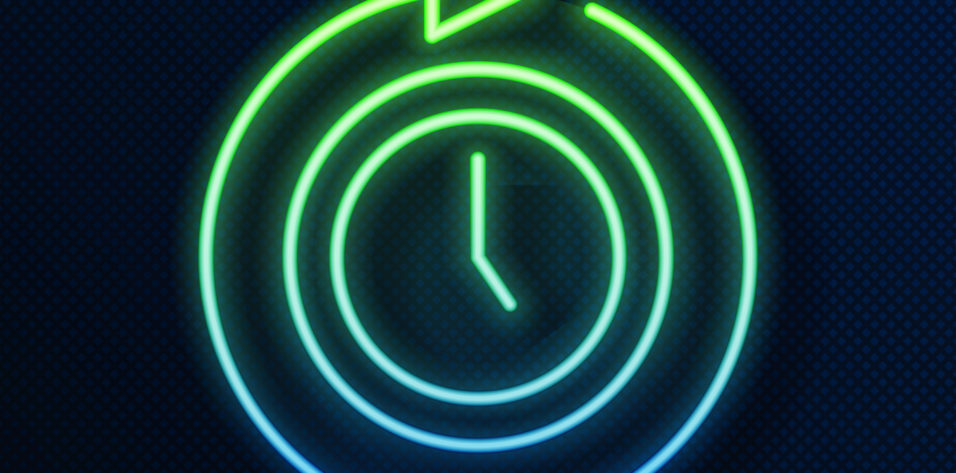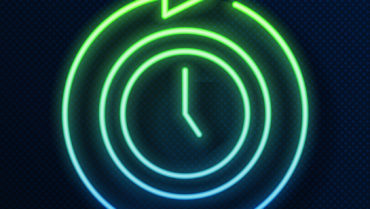Glaucoma care can include many frustrating clinical scenarios. One example is a patient with seemingly well-controlled IOP whose structural and/or functional tests demonstrate disease progression. Is the IOP truly well controlled, or are spikes occurring outside of clinic hours? Another example is a patient who returns 6 weeks after starting a new drug with no change in IOP found. Is this individual not responding to therapy, or did the single IOP measurement obtained in the clinic fail to capture the effect of treatment? These situations suggest a potential avenue for progress in the management of glaucoma: improved IOP monitoring. Home tonometry may be one way to address the challenge. Currently, the iCare Home and recently cleared iCare Home2 (both from Icare USA) are the only devices available for this purpose.
IOP AND TREATMENT DECISIONS
Given that much clinical decision-making in glaucoma is based on IOP, it seems surprising that, on average, providers rely on a handful of in-office IOP measurements obtained over the course of a year to determine IOP control. This is especially worrisome because 24-hour IOP monitoring has shown that peak IOP often occurs outside of typical office hours.1 In a study of 18 patients with normal-tension glaucoma who experienced disease progression although their IOP appeared to be well controlled, six of the nine patients who required treatment adjustments had IOP spikes that were detected only by nocturnal measurements with home tonometry.2 Home tonometry can also detect fluctuations in IOP, which have been implicated as an independent risk factor for disease progression.3
Another issue is that providers typically judge treatment response based on a single IOP reading taken after several weeks of therapy and that they often compare this reading to a single pretreatment measurement. Most people, however, have a diurnal rhythm to their IOP. If clinic visits before and after treatment fall at different points on this curve, a significant treatment response may be masked, or a poor response may be falsely inflated. This approach to evaluating treatment response can also fail to detect reductions in peak IOP and IOP fluctuations. Using home tonometry, Tong et al found that glaucoma patients who began therapy with IOP-lowering drops demonstrated different responses to treatment, including a reduction in mean IOP, reduction in peak IOP, and reduction in IOP fluctuation.4 Responses such as these may be missed if providers simply compare single in-office readings taken before and after treatment.
Tips on Incorporating Home Tonometry in Your Practice
NO. 1: OFFER TRAINING
Patients should receive hands-on training from a staff member on the proper use of the iCare Home (Icare USA). In addition to reviewing the basic functionality of the device, staff members can observe the patient obtaining measurements. It may also be worthwhile to validate the measurement that the patient obtains by comparing it to one taken with another form of in-office tonometry.
Fortunately, most patients find the iCare Home easy to use after training.1-3 It is worth noting that the device does not have a display, so patients are not aware of IOP readings in real time. In one study, only 30% of patients found this to be disadvantageous.3
NO. 2: LIMIT THE LENGTH OF TIME FOR MEASUREMENTS
It is important that patients use a home tonometer only as long as necessary because the process can be burdensome.1 Typically, a trial of 1 to 2 weeks is sufficient. Bitner and Freedman evaluated 30 days of home tonometry and found that more than 90% of IOP spikes were detected in the initial 2 weeks of home measurements.4 Huang et al measured IOP for 4 to 6 weeks and found that 1 week of IOP measurements was sufficient to capture diurnal fluctuation patterns.5 Scott et al demonstrated that therapeutic response was verified in 90% of patients with 1 week of measurements.1
NO. 3: VARY THE TIME OF DAY
Most studies using the iCare Home have assessed IOP measurements obtained several times throughout the course of the day. Interestingly, although 24-hour IOP monitoring has demonstrated IOP spikes in the early morning,6 our study found that these early morning measurements may miss treatment response. Specifically, among patients for whom in-clinic measurements did not find a treatment response, the iCare Home detected therapy-related changes for the three time periods between 10 am and 1 am but not in the early morning period (between 5 am and 10 am).1 Based on these findings, encouraging patients to obtain readings multiple times a day may help to capture peak IOP more accurately and better assess fluctuation.
1. Scott AT, Kanaster K, Kaizer A, et al. The Utility of iCare Home tonometry for detection of therapy-related intraocular pressure changes in glaucoma and ocular hypertension. Ophthalmol Glaucoma. 2022;5(1):85-93.
2. Dabasia PL, Lawrenson JG, Murdoch IE. Evaluation of a new rebound tonometer for self-measurement of intraocular pressure. Br J Ophthalmol. 2016;100(8):1139-1143.
3. Cvenkel B, Velkovska MA, Jordanova VD. Self-measurement with Icare Home tonometer, patients’ feasibility and acceptability. Eur J Ophthalmol. 2020;30(2):258-263.
4. Bitner DP, Freedman SF. Long-term home monitoring of intraocular pressure in pediatric glaucoma. J AAPOS. 2016;20(6):515-518.
5. Huang J, Katalinic P, Kalloniatis M, Hennessy MP, Zangerl B. Diurnal intraocular pressure fluctuations with self-tonometry in glaucoma patients and suspects: a clinical trial. Optom Vis Sci. 2018 95(2):88-95.
6. Barkana Y, Anis S, Liebmann J, Tello C, Ritch R. Clinical utility of intraocular pressure monitoring outside of normal office hours in patients with glaucoma. Arch Ophthalmol. 2006;124(6):793-797.
OUR STUDY
A recent study by our group at the University of Colorado validated the utility of the iCare Home for capturing treatment response.5
Methods.
The study included a control group of patients with glaucoma that was stable on therapy and a treatment group of patients with glaucoma who fell into one of three categories: (1) treatment-naïve patients starting topical IOP-lowering therapy, (2) patients undergoing selective laser trabeculoplasty, and (3) patients adding a second drop to baseline monotherapy. Participants used the home tonometer for 1 week before treatment initiation and for a second week after treatment initiation. Measurements were taken at four different time points throughout the day. Patients underwent Goldmann applanation tonometry in the clinic before and after treatment as well.
Results
Among eyes for which in-office applanation tonometry demonstrated a significant IOP reduction, home tonometry detected a treatment response (> 20% mean reduction) for at least one time point in more than 90% of eyes and at all time points in more than 45% of eyes. Among eyes for which in-office applanation tonometry did not demonstrate an IOP reduction, home tonometry detected an IOP reduction of 20% or more in 71.4% of eyes for at least one time point and in 7.1% of eyes at all four time points. The intraday and interday IOP mean, maximum, minimum, and range were all significantly reduced on home tonometry measurements, whereas patients in the control group showed no change between the 2 weeks of measurements.
Our findings validate the use of the iCare Home for detecting treatment response in patients with glaucoma and suggest that treatment in some patients may be wrongly categorized as a failure.
PATIENT PERCEPTION
Not only may home tonometry improve patient care by providing clinicians with more information on which to base decisions, but it also may improve patients’ perception of the care they receive. A survey conducted during our study found that the vast majority of the patients were somewhat or very likely to use the iCare Home to monitor their treatment if the device provided more information (92%) or reduced the number of clinic visits required (88%). Furthermore, 100% of patients said that they would recommend the use of the device to friends with glaucoma.5
CONCLUSION
Home tonometry can augment clinical decision-making in glaucoma in two ways. First, it can provide information on peak IOP that may result in treatment adjustment. Second, it may allow providers to assess patients’ response to treatment more accurately.
1. Barkana Y, Anis S, Liebmann J, Tello C, Ritch R. Clinical utility of intraocular pressure monitoring outside of normal office hours in patients with glaucoma. Arch Ophthalmol. 2006;124(6):793-797.
2. Sood V, Ramanathan US. Self-monitoring of intraocular pressure outside of normal office hours using rebound tonometry: initial clinical experience in patients with normal tension glaucoma. J Glaucoma. 2016;25(10):807-811.
3. Asrani S, Zeimer R, Wilensky J, Gieser D, Vitale S, Lindenmuth K. Large diurnal fluctuations in intraocular pressure are an independent risk factor in patients with glaucoma. J Glaucoma. 2000;9(2):134-142.
4. Tong J, Huang J, Kalloniatis M, Coroneo M, Zangerl B. Clinical trial: diurnal IOP fluctuations in glaucoma using latanoprost and timolol with self-tonometry. Optom Vis Sci. 2021;98(8):901-913.
5. Scott AT, Kanaster K, Kaizer A, et al. The Utility of iCare Home tonometry for detection of therapy-related intraocular pressure changes in glaucoma and ocular hypertension. Ophthalmol Glaucoma. 2022;5(1):85-93.




